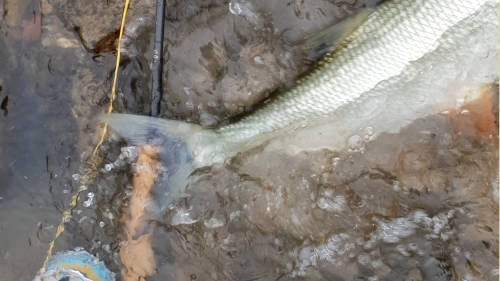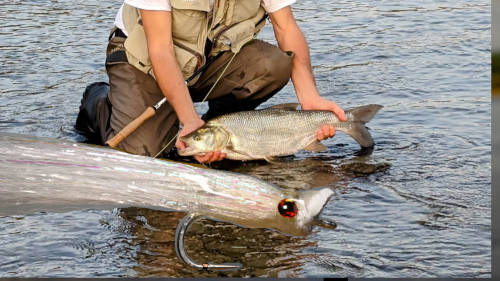



It was a dull November day, the sky the color of beaten lead. The air pressure was sliding downward, and the moon hung in its last quarter, signs that were, whether empirical or merely superstitious, auspicious enough to head to the large river.

In this video a compund of fly fishing for Asp highlights and detailed instruction to tie a fly that will cause havoc when Asp are feeding on the surface.

Big flies call for big pike, and with them, casting ability is often sacrificed. This fly, not absorbing water, is an excellent trade-off between volume and casting efficiency.

At the narrow edge where the shallows plunge into the abyss lies the fleeting line between hunter and hunted blurs.
Among the many pleasures of freshwater fly fishing, few experiences match the appeal of presenting a large stonefly nymph to a wild trout in a cold, clear mountain river.

A fly pattern that reimagines the large stonefly nymph, avoiding the bulky, stiff look of traditional big-hook imitations. More lifelike and effective by leveraging on extended body and small hook, it caught a impressive number of trout while I tested it on 3 alpine streams.

Barbel and Caddis an awesome combination. To catch barbel, you must speak the language of the bottom and the bottom is the Caddis larva reign.

One of the most stunning waterfalls in the Alps. At 1675 meters above sea level, it plunges 143 meters with a base width of up to 60 meters. I had here the chance to fish using the Euro nymphing technique.

There’s a kind of magic in standing at the edge of an alpine torrent, over 1000 meters above sea level, with nothing but a fly rod, a simple fly box, and a lanyard around your neck.

An overall imitative search pattern, mayfly nymph, stonefly nymph or drown diptera, this fly covers a wide imitative spectrum.